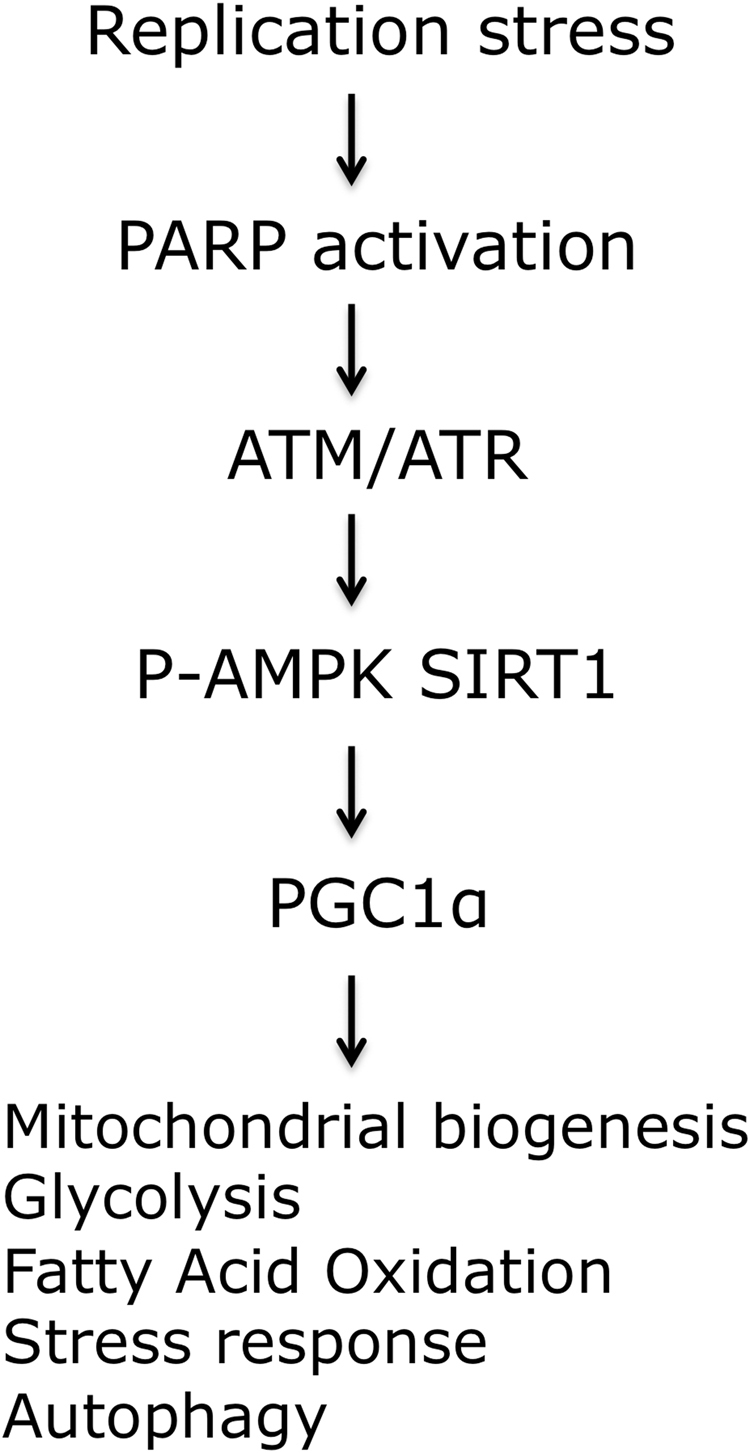Figure 6.

The “PARP-NAD+-SIRT1-PGC1α axis”. Replication stress can cause mitochondrial dysfunction by downstream changes in various cellular pathways. A number of factors contribute to this signaling, such as poly(ADP-ribose) polymerase 1 (PARP1), ataxia telangiectasia mutated (ATM), ataxia telangiectasia and Rad3-related protein (ATR), and the transcription factor p53. The NAD-dependent protein deacetylase sirtuin 1 (SIRT1) and the transcription regulator AMP-activated protein kinase (AMPK) then propagate the signal through post-translational modifications (deacetylation or phosphorylation, respectively) of peroxisome proliferator-activated receptor-γ co-activator 1α (PGC1α) and other proteins. The figure is adapted from Fang et al. 20167.
